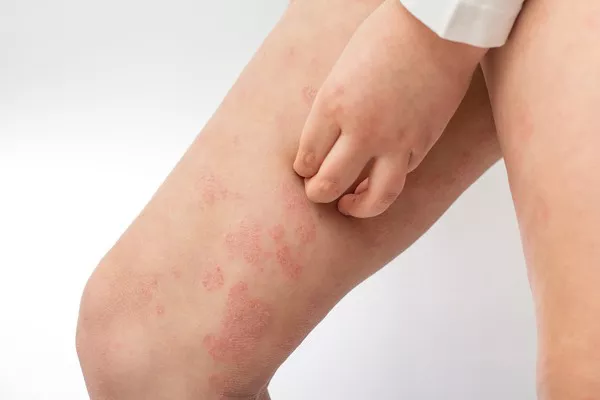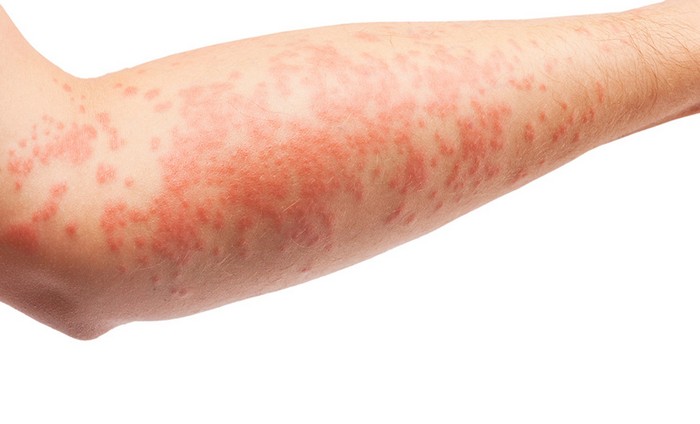Stasis dermatitis, also known as venous stasis dermatitis or gravitational dermatitis, is a common inflammatory skin condition that typically affects the lower extremities. This condition is often associated with chronic venous insufficiency (CVI), where veins in the legs do not properly return blood to the heart. The resulting poor circulation leads to a buildup of fluid and pressure in the veins, causing a cascade of symptoms including swelling, skin changes, and ulceration. This article will delve into the underlying causes of stasis dermatitis, exploring the pathophysiology, contributing factors, and the complex interplay between vascular health and skin integrity.
Chronic Venous Insufficiency: The Root Cause
The primary cause of stasis dermatitis is chronic venous insufficiency (CVI). CVI occurs when the valves in the veins of the lower legs become weakened or damaged, impairing their ability to efficiently return blood to the heart. This results in venous hypertension, where blood pools in the lower extremities, increasing pressure within the veins. Over time, this elevated pressure and blood stasis can lead to a range of vascular and skin changes.
Valve Dysfunction and Venous Hypertension
The veins in the legs contain one-way valves that prevent the backflow of blood. When these valves are functioning properly, they ensure that blood flows in a single direction, back towards the heart. However, in individuals with CVI, these valves become incompetent. This incompetence may be due to a variety of reasons, including genetic predisposition, prolonged standing or sitting, obesity, and pregnancy. When the valves fail to close properly, blood flows backward and pools in the lower legs, creating venous hypertension.
Venous Hypertension and Capillary Damage
Elevated pressure within the veins can extend to the capillary beds, causing capillary damage and increased permeability. This results in leakage of fluid, proteins, and blood cells into the surrounding tissue, leading to edema (swelling). The persistent high pressure and the resulting tissue fluid accumulation create a pro-inflammatory environment, contributing to skin changes and the development of stasis dermatitis.
Pathophysiological Mechanisms of Stasis Dermatitis
The pathophysiology of stasis dermatitis involves a complex interplay of vascular, inflammatory, and cellular mechanisms. Understanding these processes is crucial for comprehending how chronic venous insufficiency leads to the characteristic skin changes seen in stasis dermatitis.
Inflammatory Response
The persistent venous hypertension and resulting capillary damage initiate an inflammatory response in the affected skin. Inflammatory mediators, including cytokines and chemokines, are released, attracting immune cells to the area. Neutrophils, lymphocytes, and macrophages infiltrate the skin, releasing further inflammatory mediators and enzymes that contribute to tissue damage and remodeling.
Hemosiderin Deposition
One of the hallmark features of stasis dermatitis is the deposition of hemosiderin, a byproduct of the breakdown of red blood cells. When red blood cells leak out of damaged capillaries into the surrounding tissue, they are phagocytosed by macrophages. The iron from the hemoglobin within the red blood cells is then stored as hemosiderin within the macrophages. This hemosiderin deposition gives the skin a characteristic brownish discoloration, known as hemosiderin staining.
Fibrosis and Skin Changes
Chronic inflammation and ongoing tissue damage lead to fibrosis, a process characterized by the excessive deposition of collagen and other extracellular matrix components. This fibrosis contributes to the thickening and hardening of the skin, making it less pliable and more prone to further injury. The skin may also develop a scaly, rough texture, and become more susceptible to ulceration.
Contributing Factors and Risk Factors
Several factors can contribute to the development of stasis dermatitis and exacerbate its severity. These factors may influence the progression of chronic venous insufficiency and the associated skin changes.
Age
Aging is a significant risk factor for chronic venous insufficiency and stasis dermatitis. As individuals age, the veins lose elasticity, and the valves within the veins may become less effective. This can lead to an increased risk of venous hypertension and subsequent skin changes.
Gender
Women are more commonly affected by chronic venous insufficiency and stasis dermatitis than men. Hormonal factors, particularly those related to pregnancy and menopause, play a role in the development of venous insufficiency. Pregnancy increases the volume of blood in the body and places additional pressure on the veins in the lower extremities, while menopause can affect vein elasticity and valve function.
SEE ALSO: How to Treat Eczema Flare up on Hands
Obesity
Obesity is a major risk factor for chronic venous insufficiency. Excess body weight increases the pressure on the veins in the lower legs, contributing to valve dysfunction and venous hypertension. Additionally, obesity is associated with a sedentary lifestyle, which can further exacerbate venous stasis and skin changes.
Lifestyle Factors
Prolonged periods of standing or sitting can impede blood flow in the legs, contributing to venous stasis. Occupations that require extended periods of immobility, such as desk jobs or jobs that require long periods of standing, can increase the risk of developing chronic venous insufficiency and stasis dermatitis. Lack of physical activity can also impair venous return and exacerbate symptoms.
Genetics
There is evidence to suggest that genetic factors may play a role in the development of chronic venous insufficiency and stasis dermatitis. A family history of venous disorders can increase an individual’s susceptibility to valve dysfunction and venous hypertension.
Complications of Stasis Dermatitis
Stasis dermatitis is a chronic condition that can lead to several complications if not properly managed. Understanding these potential complications is crucial for effective prevention and treatment strategies.
Venous Leg Ulcers
One of the most serious complications of stasis dermatitis is the development of venous leg ulcers. These ulcers typically occur on the medial aspect of the lower leg and can be difficult to heal. The persistent venous hypertension and inflammation compromise skin integrity, making it more susceptible to injury and ulceration. Venous leg ulcers are often chronic, recurrent, and can significantly impact the quality of life.
Cellulitis
The compromised skin barrier in stasis dermatitis increases the risk of bacterial infections such as cellulitis. Cellulitis is a bacterial infection of the skin and subcutaneous tissue that can cause redness, swelling, pain, and systemic symptoms such as fever. Prompt treatment with antibiotics is necessary to prevent the infection from spreading.
Lipodermatosclerosis
Lipodermatosclerosis is a chronic inflammatory condition characterized by fibrosis and induration of the skin and subcutaneous tissue. It typically affects the lower legs and can result in a “woody” texture and changes in skin color. Lipodermatosclerosis can be painful and contribute to further complications, including venous ulcers.
Chronic Pain and Discomfort
The chronic inflammation, edema, and skin changes associated with stasis dermatitis can lead to persistent pain and discomfort. This can significantly impact an individual’s quality of life, limiting mobility and daily activities.
Management and Treatment Strategies
Effective management of stasis dermatitis requires a comprehensive approach that addresses the underlying venous insufficiency, alleviates symptoms, and prevents complications. Treatment strategies may include lifestyle modifications, medical interventions, and in some cases, surgical procedures.
Compression Therapy
Compression therapy is a cornerstone of treatment for stasis dermatitis. Compression stockings or bandages help improve venous return by applying graduated pressure to the legs. This reduces venous hypertension, decreases edema, and can alleviate symptoms. It is important for individuals to use compression garments consistently and correctly for optimal benefits.
Lifestyle Modifications
Lifestyle changes can play a significant role in managing stasis dermatitis. Encouraging regular physical activity, weight management, and elevating the legs when sitting or lying down can help improve venous return and reduce symptoms. Avoiding prolonged periods of standing or sitting is also important.
Skincare
Proper skincare is essential for individuals with stasis dermatitis to prevent skin breakdown and infections. This includes keeping the skin clean and moisturized, avoiding harsh soaps or irritants, and promptly treating any minor injuries or infections.
Medications
In some cases, medications may be prescribed to manage symptoms and prevent complications. Topical corticosteroids can help reduce inflammation and itching, while antibiotics may be necessary to treat secondary bacterial infections. In cases of severe or refractory stasis dermatitis, oral medications such as pentoxifylline may be considered to improve blood flow and reduce inflammation.
Surgical Interventions
For individuals with severe chronic venous insufficiency that does not respond to conservative measures, surgical interventions may be necessary. Procedures such as vein stripping, laser therapy, or endovenous ablation can help improve venous return and alleviate symptoms. Surgical interventions are typically reserved for cases where other treatments have been unsuccessful.
Conclusion
Stasis dermatitis is a multifactorial condition primarily caused by chronic venous insufficiency. The resulting venous hypertension, inflammation, and capillary damage lead to the characteristic skin changes and complications associated with this condition. Understanding the underlying causes and pathophysiological mechanisms is crucial for effective management and prevention. A comprehensive approach that includes lifestyle modifications, compression therapy, proper skincare, and medical or surgical interventions can help alleviate symptoms, prevent complications, and improve the quality of life for individuals with stasis dermatitis. As our understanding of this condition continues to evolve, ongoing research and advancements in treatment options hold promise for better outcomes and improved patient care.
Related Topics:

























